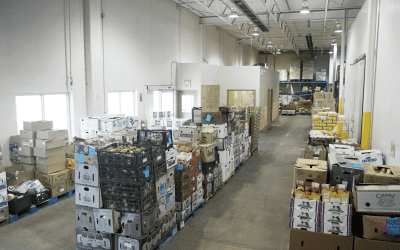What is World Food Day?
World Food Day takes place every year on October 16 – the day that the Food and Agriculture Organization of the United Nations (FAO) was founded in 1945. It is a day celebrated internationally to raise awareness about food insecurity and its contributing factors, as well as to promote action regarding these issues.
Why is World Food Day Important?
Although we produce enough food globally to feed everyone, hunger remains present in every nation on Earth. In Canada, 1 in 7 households report experiencing food insecurity, and between 720 to 811 million people faced hunger worldwide in 2020 alone. Poverty, war and conflict, climate change, resource misallocation, government policy and economic downturns are all factors that impact and intersect with food insecurity. World Food Day provides an opportunity to reflect on these issues and focus on finding solutions.
How is World Food Day observed?
World Food Day is observed by organizations who, like Second Harvest, operate within the realm of hunger and food insecurity. Every year, World Food Day adopts a different theme to highlight a particular area of focus. The theme of World Food Day 2022 is “Leave NO ONE behind”.
What are the biggest challenges facing food security in Canada?
To truly understand the state of food rescue in Canada, Second Harvest conducted world-first research illustrating the opportunities and current realities of food rescue through a trilogy of reports. The first of these reports, The Avoidable Crisis of Food Waste, found that 58% of all food produced in Canada (35.5 million tonnes) is lost or wasted throughout the supply chain, of which 32% (11.2 million tonnes) is avoidable and can be redirected to feed our communities. The second report, Canada’s Invisible Food Network, discovered that there is a massive but disconnected patchwork of over 61,000 agencies and organizations in Canada that provide food to people in need. The final report, Wasted Opportunity: Rescuing Surplus Food in a Throwaway Culture, established that 96% of surplus, edible food is not being rescued. Together, these reports highlight a crucial opportunity. There is a tremendous amount of food out there that can be rescued – enough to feed every Canadian for 5 months! – but is instead ending up in landfills.
What is Second Harvest doing to help?
Everyone deserves access to quality, nutritious food. At Second Harvest, we ensure that all people, regardless of their economic situation, can access the healthy food they need for success.
Working together with thousands of food businesses, transportation and cold storage providers, as well as through our GTA fleet and warehouse, our goal is to increase our impact across Canada by rescuing 72 million pounds of healthy and nutritious food each year. These resources will be redistributed to ten thousand front-line and non-profit food programs, providing direct support to children, youth, seniors, families and individuals all throughout the country.
Second Harvest is also committed to raising awareness of the impact that food loss and waste has on our climate. We will continue to advocate for public policy change aimed at mandatory measurement, monitoring and targets of food loss and waste reduction to align with Canada’s UN commitment of reducing food loss and waste in half by 2030.
What can I do?
You can make a difference on World Food Day by supporting Second Harvest’s critical mission of growing an efficient food recovery network to fuel people and reduce the environmental impact of avoidable food waste.
As food costs rise, more and more Canadians find themselves facing food insecurity. Becoming a Second Harvest donor is the best way to help people in need right in your community. Make your donation today at secondharvest.ca/donate.





